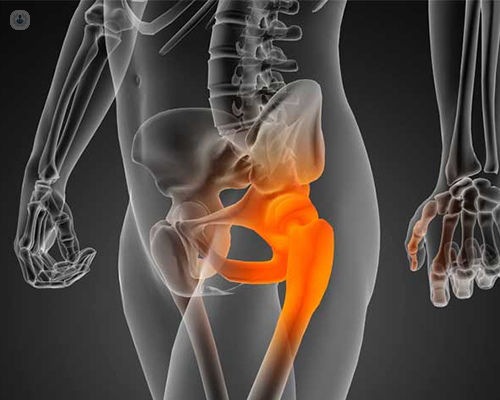Hip
Mr Pramod Achan - Orthopaedic surgery
Created on: 11-13-2012
Updated on: 09-21-2023
Edited by: Carlota Pano
What is the hip?
The hip is the joint where the thigh bone (femur) and the pelvis meet.
It has two main parts:
- The “ball” at the end of the femur.
- The “socket” cavity in the pelvis.
The hip is a spheroidal or “ball-and-socket” joint in which the ball of the femur fits inside the socket of the pelvis. As a result, the hips are very stable and permit a wide range of movement.

The hip has a complex structure, owing to the weight it must bear and the essential function it performs. It is composed of:
- An extensive set of bones
- Ligaments
- Vessels
- Muscles
What is the function of the hip?
The hip is the joint that unites the upper body with the lower body. Therefore, its correct functioning is fundamental in allowing our body to move correctly.
The hip is designed for mobility as well as stability. It enables the lower limbs to move in three planes, and also provides an important shock-absorbing function for the lower limbs and the upper body.
What diseases affect the hip?
Some of the diseases and conditions that can affect the hips are:
- Osteoarthritis of the hip (degenerative disease that affects the cartilage)
- Arthritis of the hip
- Hip fracture (break in the femoral bone)
- Congenital hip dysplasia (a baby's hip socket doesn't fully cover the femoral bone)
- Epiphysiolysis of the femoral head (displacement of the femoral neck)
- Snapping hip syndrome (a snapping sensation or a popping sound when the hip joint moves)
- Hip dislocation (the femur is separated from the pelvis)
- Trochanteric bursitis (the bursa is inflamed)
- Hip joint distension (occurs in osteoarthritis)
Treatment of hip problems can include rest, medications, physiotherapy or surgery, including hip replacement surgery.
















